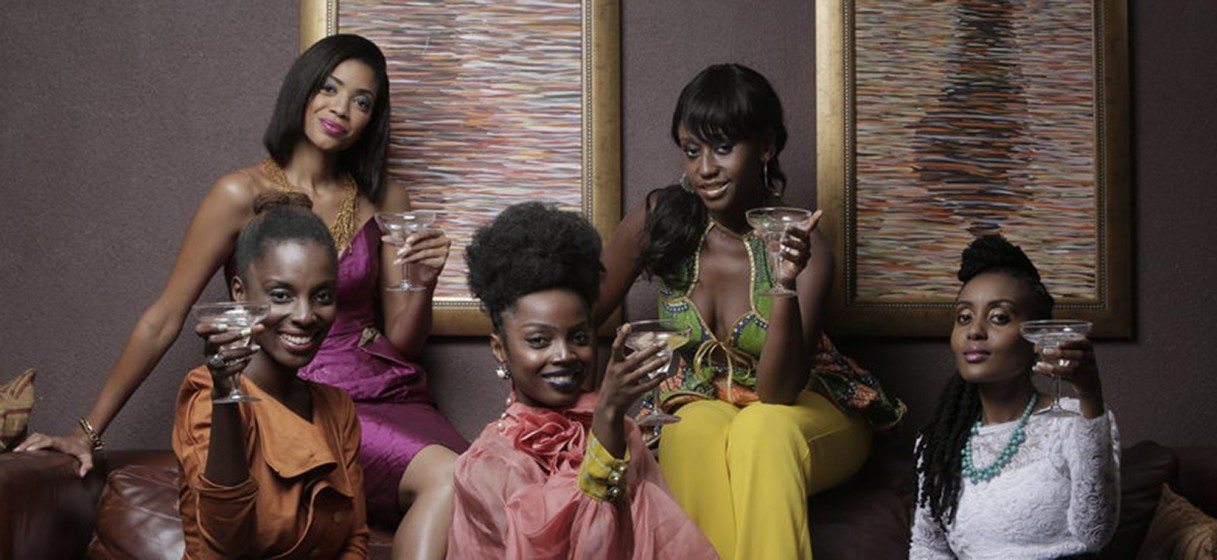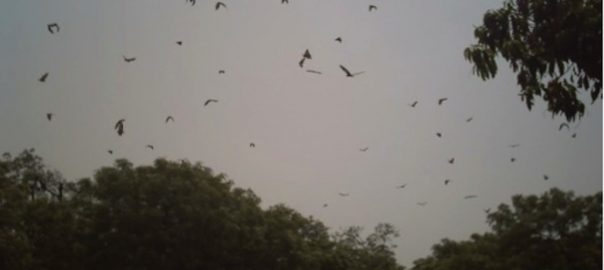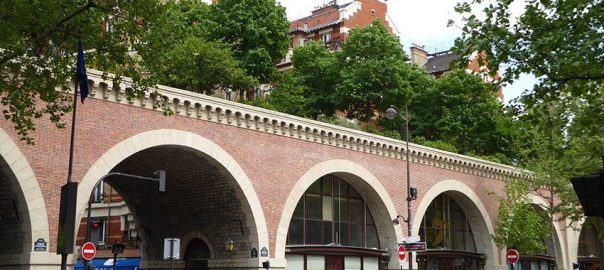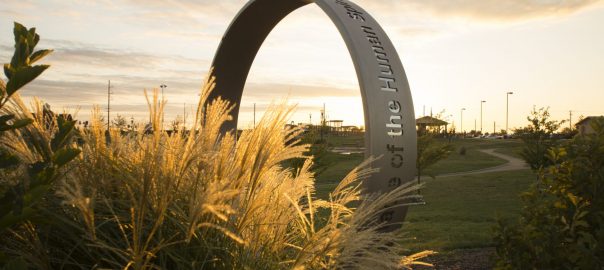
“[A city where] everything comes together . . . subjectivity and objectivity, the abstract and the concrete, the real and the imagined, the knowable and the unimaginable, the repetitive and the differential, structure and agency, mind and body, consciousness and the unconscious, the disciplined and the trans-disciplinary, everyday life and unending history.” —Edward Soja [1]
No other city that I know of piques the imagination quite like The African City, wherever in Africa that is. I live in Johannesburg; I grew up in Accra: two African cities that have as little—or as much—in common as Chicago or Shanghai, but whose broad geography binds them together in ways that are both entirely fictitious and entirely real. By their very nature, cities are both generic and astoundingly, endlessly specific. An inclusive urbanism relies heavily on notions of shared values and a shared understanding of the public realm.
When the invitation to contribute to The Just City essays project arrived in my email inbox, I was struck by its timing. It’s probably just over ten years ago that I met Max Bond in Accra, sadly for the last time, as it turned out. He was visiting the Ghanaian architect Joe Osae-Addo, and the three of us had dinner at the Golden Tulip Hotel on Independence Avenue whilst waiting for Accra’s terrible, gridlocked traffic to die down. I no longer recall our exact conversation, just its aura. Africa, the African diaspora, race, identity, architecture…the state (and not just in a physical sense) of African cities. What could African-American architects and urban designers bring to the table? What had Americans learned about race, class and culture that might prove useful to a new generation of African architects, planners, city-makers? Bond was better placed than most to answer the question: Ghana had been his home in the 1960s, in the first heady decade after independence. He’d seen more of the country than many Ghanaians, myself included, and his views were wide-ranging and broadly cosmopolitan, yet at the same time deeply personal and intuitive. We were joined a little later by another African-American architect, Jack Travis, also a close friend of Bond’s. Four architects, two continents, one and a half generations between us and many, many questions, though perhaps fewer answers.
Today, I’m sitting at my desk in Johannesburg with half an eye on the American sociologist Richard Sennett’s recent book, “Together,” a fascinating examination of the cooperative skills people need to sustain everyday life, and half an eye on the television. BBC World News has been screening a series on American cities post-Ferguson, “Summer in the City.” There’s a sense of déjà-vu: race, class, culture and the city. Plus ça change. But the blurb on the back of Sennett’s book suddenly jumps out at me. “Living with people who differ—racially, ethnically, religiously or economically—is one of the most urgent challenges facing civil society today.”[2] Both the book and the television screen provide a surprisingly neat framework for this essay, In It Together, given that so many other things have coalesced around its writing.
I teach architecture, the science of space, one might call it. More than any other discipline (and perhaps contradictory to its finished product), architecture is fluid, concerned with an endless series of translations—from idea to drawing; drawing to building; building to city; city to society; and so on. Every single one of my students at the University of Johannesburg is multilingual, sometimes in as many as four languages. It seems to me that there’s an interesting parallel between these students for whom the fluidity of daily life, moving between languages and locales, sometimes even whole worlds, mirrors the essential nature not only of their practices (as budding architects), but the daily reality of the multiple worlds they inhabit, contained uneasily within the city, in the same space and time.
For African city-dwellers—cityzens, we might call ourselves—there’s an added dimension to what it means to live in Kumasi, Kigali or Kinshasa, and it has to do with speed: of change, of movement, quite literally: from the slow-death speed of traffic to the speed of information flows, capital and stock…mineral or human, in itself a cruel comparison. For quite some time now, African cities seem perpetually to be described ‘in transition’, though it’s not always entirely clear where we’ve come from or where we’re heading. In Yorgos Simeoforidis’ 1997 essay, ‘Notes for a Cultural History Between Uncertainty and the Contemporary Urban Condition,’[3] he describes ‘the anxiety of the present,’ a new landscape of urban and architectural discourse that has sprung up in ‘an attempt to grasp a perpetually shifting reality, to describe and interpret contemporary urban phenomena.’ For anyone who has spent time in any of the continent’s cities, the terms ‘anxiety,’ ‘shifting’ and ‘uncertainty’ seem to accurately sum up their edgy, urban zeitgeist. African cities are, quite literally, hard to grasp. In the same essay, Simeoforidis makes another interesting observation that finds resonance today: “the anxious desire to understand the present shows through the most official manifestations on architectural culture, Cities and the urban condition now constitute the privileged theme of international exhibitions.[4]
Simeoforidis’ essay was penned almost twenty years ago. Between 2013 and 2016, no less than eight major global exhibitions have featured the ‘African City’ as a major theme, most taking place in locations as diverse (and un-African) as Denmark, Chicago, New York and Munich, to name a few. In each, the notion of ‘justice’, although usually writ large, is often a subliminal, only partially articulated desire: beneath the statistics (woeful); the chaos (bewildering); the infrastructural under-development (paralysing) or the resilience-in-the-face-of-it (heartwarming) that the inhabitants invariably display, there is a genuine desire to create a more just, equitable, inclusive, resilient city, mirroring the larger-scale society in which such a city might stand. But it’s a complex, difficult and at times seemingly impossible task. The “The Sound of Music” suddenly springs to mind: “how do you catch a cloud and pin it down?”[4]
Contemporary architectural and urban discourses over the past decade have been profoundly influenced by events that introduce a new level of questioning. The terminology now centres around a new spatiocultural politics [of] ‘rights to the city,’ civil rights’ and ‘spatial justice,’ which theorists (like Edward Soja, quoted at the top here) believe will ultimately transform architecture and urbanism.
So what exactly is a ‘just’ city? Is it the same as a ‘city of justice’? How would we recognise and assess it? How might one go about creating it and are there rules governing its framework? The American urban theorist and architect Michael Stanton writes of the way “a city divides into forms and attitudes . . . into grand narratives and great collective generalisations. Cities are collaborative works . . . conceived passionately, formed imperfectly, understood and misread by a continually transforming and distracted collective.” If cities really are “collaborative works,” places where people of differing racial, linguistic, religious and economic backgrounds and persuasions come together to enact some form of public (and private) life, then it stands to reason that one place where we might begin the difficult task of building a ‘just’ city is with our definitions of ‘collaborative’, of ‘cooperation’ and ‘collective.’
![In It Together[Image 02][Lokko]](https://www.thenatureofcities.com/TNOC/wp-content/uploads/2015/10/In-It-TogetherImage-02Lokko1-387x560.jpg) If I said earlier that no city piques the imagination quite like the African city, then I should also add that no city destabilises the idea of the ‘collective’ quite like Johannesburg. It is at once a city of anti-collectives and hyper-collectives; endless satellites of tightly-knit, tightly-policed enclaves that sit uneasily together, bound by a network of freeways, roads, taxi-routes and railway lines. For the most part, the enclaves remain intact, policed along class- rather than race-lines, although there are three or four pockets of genuinely mixed occupation (and here I invoke race not class) that have sprung up in the past decade. Within these enclaves, an exaggerated sense of community persists; an ‘us vs. them’ attitude where the terms are interchangeable—one man’s ‘us’ is another’s ‘them’, and so on. As a Jo’burger, the temptation to wallow in the city’s dystopian self-image is all too tempting. Disconnected, segregated, dysfunctional, dangerous . . . these are readily accessible, perniciously familiar tropes. Yet, thumbing through Sennett, it’s comforting (if that’s the right word) to recognise another truth: it was ever thus.
If I said earlier that no city piques the imagination quite like the African city, then I should also add that no city destabilises the idea of the ‘collective’ quite like Johannesburg. It is at once a city of anti-collectives and hyper-collectives; endless satellites of tightly-knit, tightly-policed enclaves that sit uneasily together, bound by a network of freeways, roads, taxi-routes and railway lines. For the most part, the enclaves remain intact, policed along class- rather than race-lines, although there are three or four pockets of genuinely mixed occupation (and here I invoke race not class) that have sprung up in the past decade. Within these enclaves, an exaggerated sense of community persists; an ‘us vs. them’ attitude where the terms are interchangeable—one man’s ‘us’ is another’s ‘them’, and so on. As a Jo’burger, the temptation to wallow in the city’s dystopian self-image is all too tempting. Disconnected, segregated, dysfunctional, dangerous . . . these are readily accessible, perniciously familiar tropes. Yet, thumbing through Sennett, it’s comforting (if that’s the right word) to recognise another truth: it was ever thus.
The French philosopher, Henri Lefebvre, whose work has influenced architects and urbanists for half a century, famously offered three definitions of spatial practice — space as it is perceived, represented and lived. These differences find easy resonance across this continent. Most African cities are perceived (by outsiders, at least) to be chaotic and maddeningly unpredictable. They are often represented as such, from Neill Blomkamp’s dystopic District 9 and Chappie to Mad Max 4: The Road to Fury, shot on location in Namibia. However, there’s another side to the question of perception and representation, where the lived experience makes it past the outsider’s disapproving gaze and bursts onto the screen. Nollywood, the $US 5billion industry that originated in the 1960s in Nigeria, is the second-largest film industry in the world, behind the United States and ahead of India. With thousands of films released every year, a quick Google search reveals an interesting glimpse into the way the city, in the African imaginary, is portrayed. Burning City, Who Owns the City?, King of the City, City of War, City of Sin, City of Dragons. Without pressing play, a paradigm emerges of the city as a contested space, at once feared and admired. “An African City”, the new, much-hyped web series conceived, created and directed by a young Ghanaian, Nicole Amarteifio, is billed as “Africa’s ‘answer’ to Sex & the City.” Executive Producer Millie Monyo embraces the connection to Carrie Bradshaw. “It was absolutely an inspiration, and we welcome the comparison. Why can’t we have [that] on our continent?”
But have what, exactly?

Tau’s use of the word together, spoken as an aside halfway through the conversation, took me straight back to Sennett. In the introduction to Together [7], he lays bare the reason behind his decision to write a trio of books about “the skills people need to sustain everyday life.” The Craftsman, the first in the trilogy, examines craftsmanship, the quest “to make physical things well.” Together, his second book, is an examination of our responsiveness to others, to “the practical application of responsiveness at work, or in the community.” In his last book, as yet unwritten, he turns his attention to cities, to the “task or skill of making cities,” which, in his opinion, we don’t “[do] very well.” In his own words, his task “is to relate how people shape personal effort, social relations and the built environment.” Although Together wasn’t written specifically with cities or urban environments in mind, Tau’s description of an inclusive urbanism relies heavily on the same notions of shared values, understandings and—perhaps most importantly—a shared understanding of the public realm which allows and encourages us to appreciate our common values and at the same time, to tolerate ‘difference,’ however it is expressed.
This notion of an ‘inclusive’ form of urbanity is appealing for all sorts of reasons, but the question of what that might be, how one might construct both a curriculum and a disciplinary framework around such a notion is unclear. In a city like Johannesburg, where the very idea of the collective, collaborative citizen remains a lofty aspiration rather than a daily fact, Sennett’s task seems improbable, even impossible. But somewhere between Tau’s comment and Sennett’s astute observations on the term ‘rehearsal’ lies a glimmer of hope. Sennett talks of rehearsals “of the professional sort, the kind necessary in the performing arts. There is a basic distinction between practising and rehearsing; the one is a solitary experience, the other is collective.” The same distinction can be made between those of us for whom ‘the city’ is both a professional and personal endeavour. We practice our craft: designing, shaping, building our built environments. We also inhabit the results of our endeavour: as citizens, city-dwellers, whether as newly-arrived migrants or natives-of-this-patch. In coming together, we rehearse a collective script that’s been around for centuries: the script of the city, the ‘play’ of urban life.
Is Johannesburg a ‘just’ city?
We’re trying to be. I believe it’s the first time I’ve ever said “we.”
Lesley Lokko
Johannesburg
The Just City Essays is a joint project of The J. Max Bond Center, Next City and The Nature of Cities. © 2015 All rights are reserved.
Notes:
[1] Soja, E. ‘Lessons in Spatial Justice’, in Thirdspace–Journeys to Los Angeles & Other Real-and-Imagined Places, Oxford: Blackwell, 1996[2] Taken from the jacket of Together, Sennett, R., Penguin: London, 2012
Simeoforidis, Y. ‘Notes for a Cultural History Between Uncertainty and the Contemporary Urban Condition’, in Koolhaas, R. et al., Mutations, Barcelona: ACTAR, 1999
[3] ibid., p.415
[4] “Maria,” from the motion picture The Sound of Music, lyrics by O. Hammerstein and R. Rodgers
[5] Retrieved 6 August 2015. Image: Emmanuel Bobbie/Bob Pixel Studios
[6] From a conversation between the author and the Executive Mayor of the City of Johannesburg, at Civic Centre, Braamfontein, Johannesburg on 4 September 2015
[7] Sennett, R., Together, Penguin: London, 2012







Leave a Reply